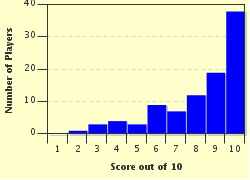Quiz Answer Key and Fun Facts
1. Beethoven was not just a prolific piano composer, he was a teacher and virtuoso performer on the instrument; and he premiered many of his own compositions. His first teacher was his father Johann, but which of these great composers also taught Beethoven?
2. In 1795 Beethoven performed the premiere of his "Piano Concerto Number Two in B-flat Major" as a way of establishing himself upon his relocation to which city?
3. Beethoven's "Piano Concerto Number One in C Major" has in its first movement a number of stylistic references to which great Viennese composer, who died in December, 1791?
4. Beethoven composed "Piano Concerto Number Three in C Minor" in 1800, during a period when he was coming to grips with the fact that that he was suffering from a serious illness. From which illness, which would eventually dominate his life, did Beethoven suffer?
5. Beethoven completed this composition, "Piano Sonata Number 14 in C-sharp Minor," in 1801 and dedicated it to one of his pupils. Although he called the piece "Quasi una Fantasia" ("In the Manner of a Fantasy"); by what more famous nickname is it known?
6. Composed in 1804, "Piano Sonata Number 21 in C major," known as the "Waldstein," was named after Beethoven's great friend and patron, Count Ferdinand Ernst Gabriel von Waldstein. Count Waldstein devoted a major part of his life to attempts to defeat which military leader?
7. The "Piano Concerto Number Four in G Major" was composed from 1805-1806 and received its public premiere at an 1808 concert in which Beethoven appeared as the soloist, his last such appearance. The concerto was not popular with the public and fell into disuse. Which great composer and virtuoso had "A Midsummer Night's Dream" and revived the concerto by adding it to his repertoire?
8. "Piano Sonata Number 23 in F Minor," known as "Appassionata," was composed from 1804-1805, and possibly into 1806. It was dedicated to Count Franz von Brunswick, whose sister Josephine may have been the special loved one to whom Beethoven addressed a famous unsent letter. What term of endearment did Beethoven use in writing to this mysterious correspondent?
9. The "Piano Concerto Number Five in E-flat Major" was written from 1809-1811, as Vienna was under bombardment by Napoleon's forces. It is Beethoven's grandest and most masterful piano concerto by far, and also his final complete one. What is its nickname?
10. Concertos, sonatas, now a bagatelle: specifically, "Bagatelle Number 25 in A Minor," probably composed in 1810, but not published until 40 years after Beethoven's death. This music is perhaps Beethoven's most recognizable piece after the four (da-da-da DUM!) opening chords of his Fifth Symphony. What do we call it?
Source: Author
shorthumbz
This quiz was reviewed by FunTrivia editor
ertrum before going online.
Any errors found in FunTrivia content are routinely corrected through our feedback system.

